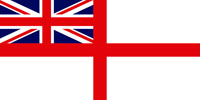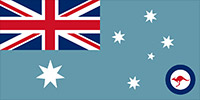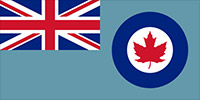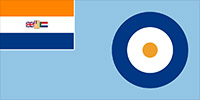 |
 |
 |
 |
 |
 |

RAF No 21 Squadron
RAF No 21 Squadron
Motto: Latin: Viribus vincimus (By strength we conquer)
Forming at Netheravon on 23 July 1915, No 21 moved across to France with its RE7s in January 1916. It initially operated in the Army role, which involved bombing and long range reconnaissance, but in August the demand for fighter squadrons saw 21 re-equipping with BE12s for this role. However, due the BE12s poor performance the squadron still continued to carry out bombing operations and so in February 1917, it converted to the Corps reconnaissance role with RE8s. It continued in this role until the end of the war, returning to Britain in February 1919 and disbanding on 1 October of that year.
It was 3 December 1935 before the squadron reformed, which happened at Bircham Newton. The squadron was a light bomber unit equipped with Hinds, which it replaced with Blenheims in August 1938. In the early part of WW2, the squadron operated against targets in Holland and Belgium but in June 1940, it moved to Lossiemouth, from where it undertook anti-shipping operations. It returned to East Anglia in October but in December was sent to Malta, where it carried out anti-shipping missions until disbanding on 14 March 1942.
At Bodney on the same day, a new No 21 formed, taking over the Blenheims of No 82 Squadron. Two months later Venturas arrived followed by a lengthy work-up delaying the squadron's first operation with the new aircraft taking place on 6 December 1942. This involved 17 aircraft being sent on the famous daylight attack on the Philips Electronics factory at Eindhoven. It was a case of being equipped with an unsuitable type again and in September 1943 the squadron re-equipped with the Mosquito. At the same time it began to operate in the night bombing role as well as carrying out daylight missions occasionally. As Allied troops moved towards Germany many squadrons moved onto the continent and No 21 was one of these in February 1945, from where it continued to undertake intruder operations. It remained in Germany after the war, disbanding at Gutersloh on7 November 1947.
It rejoined the 'Order of Battle' on 21 September 1953 as a Canberra squadron at Scampton. It moved to Waddington in 1955, where it disbanded on 30 June 1957. When No 542 Squadron had finished carrying out its duties in Australia as part of Britain's nuclear testing programme, it was re-numbered No 21 on 1 October 1958, but this period of existence was short-lived as it disbanded at Upwood on 15 January 1959.
Four months later, on 1 May, it was revived at Benson in the light transport role, equipped with Twin Pioneers. It moved out to Kenya the following September, where it stayed until June 1965 when it moved north to Aden. It continued to operate in support of Army operations in the Radfan until disbanding on 15 September 1967. No 21's final incarnations began on 3 February 1969 when the Western Communications Squadron was redesignated at Andover, being finally disbanded on 31 March 1976. At the time of writing (February 2002), the squadron is dormant.
Battle Honours*
Somme, 1916: Western Front, 1916-18: Messines, 1917: Arras, 1917: Ypres, 1917: Cambrai, 1917: Amiens: Somme, 1918: Channel & North Sea, 1939-41: France & Low Countries, 1940: Dunkirk: German Ports, 1941: Fortress Europe, 1940-45: Biscay Ports, 1941: Malta, 1942: Mediterranean, 1942: Normandy, 1944:France & Germany, 1944-45: Squadron Codes used: -
JP Apr 1939 - Sep 1939
YH Sep 1939 - Nov 1947Web References: http://www.rafweb.org/Squadrons/Sqn021-25.htm
 Editor for Asisbiz: Matthew Laird Acred
Editor for Asisbiz: Matthew Laird Acred
If you love our website please add a like on facebook
Asisbiz has been running since July 2006 and can continue to run with your kind help!
Please donate so we can make this site even better !!